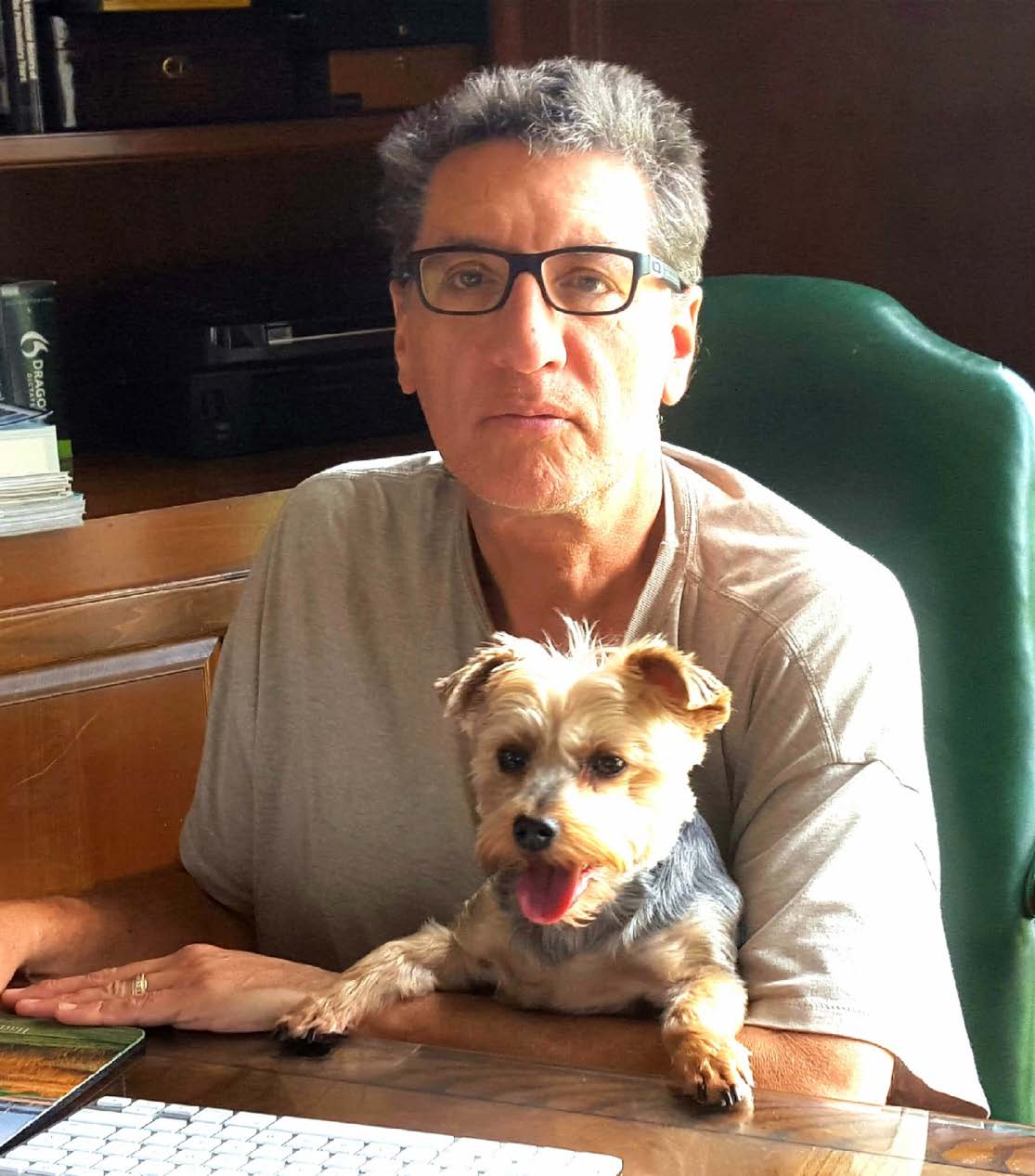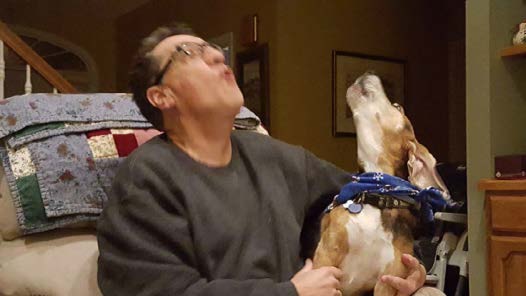
I CAN HEAR YOU
BY CARL K. LANGE, M.D.
Two years ago, my 83-year-old mother visit- ed my wife and me in Pittsburgh. We are both transplants from Washington D.C. and New York City respectively, migrating to the Steel City to avail ourselves of the premiere medical education offered in this city.
Driving to the airport to retrieve our feisty matriarch, my wife and I discussed the aggressive agenda we had planned for the woman who, just a year prior, assisted us in laying 18 yards of mulch in our yard, by the way, just shortly after losing her husband of 60 years.
As we approached the baggage claim area, we could see mom standing next to two airport employees. Allow me to tell you something about my mother. Time and osteoporosis have diminished her once five-foot three frame to just around four foot seven. Wispy white hair and a slight kyphosis combined with her shuffling gait highlight her senior citizen status.
As she clutched her carry-on while watching the baggage carousel circle, I could hear one of the workers shout over her head, "Hey, this old lady needs help!" "What's she want?" responded his colleague. "I don't know. She seems to be lost." Worker number one. "I don't think she can find her bag. She probably can't find the exit." Worker number two. Mom watched the interaction with amusement, finally responding, "You know, I can hear you!"
Allow me to tell you something else about mom. As a young woman back in New York City, she ran a multi-branch Savings Bank when glass ceilings were impenetrable. Her hobbies included piloting twin engine airplanes and playing trumpet in an all-male brass ensemble. She is still sharp as a tack and nobody's fool. The airline employees, embarrassed by being schooled by an eighty-three-year-old grandmother then directed their attention to her, thereby validating her living, breathing, thinking, human-being status.
I am an emergency room physician at a major hospital in Pittsburgh. As such, I have the opportunity to see a wide range of pathology across a diverse population. Disease and tragedy know no bias. Among the patients that I often treat are the special needs residents from our local personal care facilities. They are almost always accompanied by relatives or caretakers, almost always toting a wheel-barrow full of charts, xrays and medical records. An interesting common denominator reflected by everyone in the "supporting cast" which I noted early on in my career is an eerie air of calm and peace emanating from their persona, as if they knew something I didn't. I couldn't help bookmarking in the posterior aspect of my cerebrum that there was something very different about these caretakers. In the beginning, I felt intimidated by the thought that they potentially saw me as someone lacking in some way. Probably, it was my pride that ultimately extinguished this obviously inaccurate assessment they had synthesized of me. After all, I am the doctor. What could they possibly teach me?
Shortly after my mother had educated the airport baggage claim employees in the subtle art of human interaction, I was at work in the emergency department. I picked up my next chart and studied the chief complaint. "Twenty-seven-year-old male with abdominal pain." After reviewing the past medical history, I ascertained that he also had reflux esophagitis and cerebral palsy. Upon entering the room, my astute observational skills drew my attention to a young man lying on the hospital bed contracted and writhing. His left arm flailed aimlessly in the air.
I began my history-taking, directing my attention to the two concerned parents sitting adjacent to the bed. Initiating my interview at a volume louder than a person should speak without the use of amplifiers, because that's what we do when we think someone does not understand us, right? I asked my first question. "WHAT BRINGS YOU TO THE EMERGENCY ROOM?" The parents glanced at each other with the look with which I had become all too familiar.
"DOES YOUR STOMACH HURT?" Again, directed at the parents. I waited for a response. After a few moments of uncomfortable silence, I could hear a strained, dysarthric response. “I can hear you, you know.” Left arm flailing, my contracted, drooling patient was communicating with me. He again squeaked out the same words. “I can hear you.” Speaking of stomach pain, I felt as if I had been punched in the gut. I was embarrassed. I was humbled. I think I gave a quiet apology and then quickly completed my physical exam.
I had learned nothing from my mother’s experience at the air- port. The fatal error I committed was assuming that because my young patient looked different on the outside, he must be different on the inside. His parents patiently explained to me what I had already learned in medical school many years ago. Academically, I knew that his mental faculties and cognition could potentially be perfect- ly functional. I intentionally used the word “functional” rather than “normal” because after my hum- bling experience, I am now con- stantly reminded that different does not imply abnormal. Human beings are human beings, and how we choose to address a per- son should never be contingent on physical appearance.
Even if studies demonstrate that speaking directly to stroke patients, or even patients in catatonic states may lead to more favorable medical outcomes, I have learned that sometimes, medical literature is beside the point. We are all created equally and if this is to be believed, then every aspect of human communication and interaction should reflect it. A 27-year-old young man, whose physical presentation just happened to be different from what we have been conditioned to believe is the norm reminded me of this fact. Several months ago, I again had the opportunity to take care of a young gentleman with cerebral palsy. Upon entering the room, I introduced myself, said a polite hello to the patient's caretaker and immediately approached the patient's bed to begin my interview. I asked him in a normal volume what brought him to the emergency room. Unfortunately, the severity of his condition was much greater than my previous patient. Contracted and consumed with spasticity he was emanating sounds that were untranslatable. He writhed on the bed again making sounds that I was unable to understand. I was happy to be able to put my hand on his shoulder and answer him, saying, "I can hear you."•

LOUD AND CLEAR: The author with Max (opposite page) and Rufus (above); "I had learned nothing from my mother's experience at the airport. The fatal error I committed was assuming that because my young patient looked different on the outside, he must be different on the inside."
ABOUT THE AUTHOR Dr. Carl Lange is an Emergency Medicine physician practicing in Pittsburgh, Pennsylvania. He is Board Certified by the American Board of Surgery and works with University of Pittsburgh Physicians at The University of Pittsburgh Medical Center.